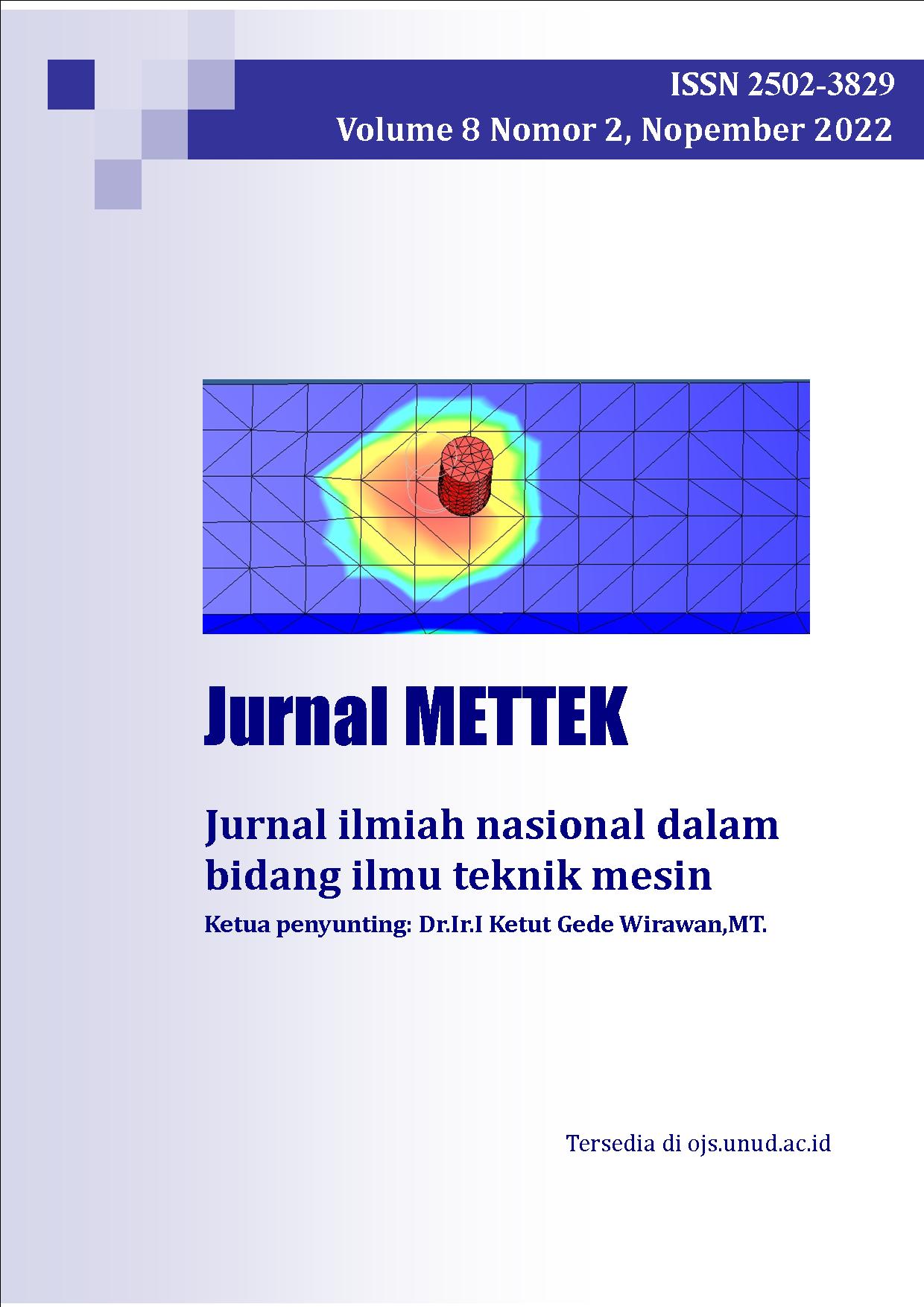Analisa Pengaruh Variasi Diameter Bed Material Pasir Silika pada Fluidized Bed Combustion Limbah Medis Terhadap Pergerakan Fluidisasi
Abstract
Pandemi Covid-19 menyebabkan meningkatnya penggunaan layanan kesehatan yang sangat signifikan sehingga jumlah limbah medis yang dihasilkan akibat kegiatan ini cukup tinggi. Limbah medis termasuk ke dalam kategori limbah B3 yang harus ditangani dan dikelola dengan baik. Salah satu teknologi yang mampu mereduksi limbah tersebut yaitu insenerator jenis Fluidized Bed Combustion (FBC). Teknologi FBC ini menggunakan media pengaduk berupa pasir yang akan bercampur dengan bahan bakar dan dalam proses pembakarannya menggunakan temperature yang tinggi, namun dalam pembakaran tipe FBC ini memungkinkan terjadinya suatu aglomerasi di dalam reaktor. Salah satu yang menyebabkan terjadinya aglomerasi tersebut adalah pergerakan bed material dalam proses fluidisasi ini kurang maksimal. Oleh sebab itu, pada penelitian ini melakukan pengujian secara permodelan untuk mengetahui proses fluidisasi terhadap lonjakan bed material menggunakan software Circulating Particle Fluids Dynamic (CPFD) Barracuda Virtual Reactor. Dalam penelitian ini adapun variasi bed material yang digunakan adalah pasir silika dengan variasi diameter DA (0,2 mm), DB (0,5 mm), DC (0,8 mm), DD (1,1 mm). Kecepatan aliran udara fluidisasi ditetapkan sebesar 4 m/s dan tekanannya diberikan sebesar 1 atm. Menurut hasil simulasi, proses fluidisasi yang terbaik ditunjukkan oleh variasi pasir silika DA dengan tinggi lonjakan 80 cm dari permukaan reaktor. Sedangkan variasi diameter lainnya seperti DB, DC, DD berturut-turut tercatat hanya mencapai ketinggian 65 cm; 40 cm; 25 cm dari dasar rekator.
The Covid-19 pandemic has caused the utilization of health services to be very significant so that the amount of medical waste generated from this activity is quite high. Medical waste is included in the category of B3 waste that must be handled and managed properly. One technology that can reduce this waste is the Fluidized Bed Combustion (FBC) type incinerator. This technology uses a mixture of sand mixed with fuel and in a high temperature combustion process, but in this type of FBC combustion it is possible for agglomeration to occur in the reactor. One of the causes of agglomeration is the movement of bed material in the fluidization process that is not optimal. Therefore, in this research, a modeling test was conducted to determine the basic material fluidization process using the Barracuda Virtual Reactor's Circulating Particle Fluids Dynamic (CPFD) software. Variations of bed material used are silica sand with a diameter of DA (0,2 mm), DB (0,5 mm), DC (0,8 mm), DD (1,1 mm). The fluidization air flow velocity is set at 4 m/s and the applied pressure is 1 atm. Based on the simulation results, the best fluidization process is indicated by the variation of silica sand with a diameter of DA and a height of 80 cm from the reactor surface. While other diameter variations such as DB, DC, DDeach recorded reaching a height of only 65 cm; 40 cm; 25 cm from the bottom of the reactor.
Downloads

This work is licensed under a Creative Commons Attribution-NonCommercial-ShareAlike 4.0 International License.

This work is licensed under a Creative Commons Attribution-NonCommercial-ShareAlike 4.0 International License.







